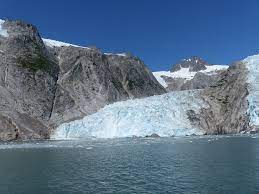What Is Glacial Retreat?

Recent studies on Himalayan glaciers show that the variability in retreat rate and mass balance in different sectors of the mountain range is primarily linked to topography and climate.
- A team from Wadia Institute of Himalayan Geology (Uttarakhand) studied two glaciers with different characteristics, the Pensilungpa Glacier (Ladakh) and the Durung-Drung Glacier, (Ladakh) for a comparative study of glacier fluctuations between 1971 and 2019.
- They quantitatively evaluated the influence of the debris cover on the loss of ice mass in summer and on the terminal recession of glaciers.
- Their study confirms that the glacier retreat rate is controlled by climate change and the topographic setting and morphology of the glacier.
- They also found that the thickness of the debris cover significantly alters the glacier response to climate forcing.
- Other factors such as snout geometry, glacier size, elevation range, slope, aspect, debris cover, as well as the presence of supra and proglacial lakes also influence the heterogeneous glacial dynamics
- Glacial retreat refers to the process of a glacier shrinking or receding in size over time due to a decrease in ice accumulation or an increase in ice melt.
- This can be caused by a number of factors, including rising global temperatures, changes in precipitation patterns, or changes in the geography of the surrounding landscape.




